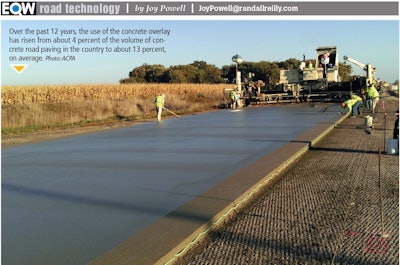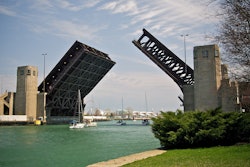
In western Iowa, workers with Manatts placed a 6-inch unbonded concrete overlay on nearly 11 miles of existing asphalt on a Guthrie County highway. That $3.9 million overlay in 2016 is among a rising number of concrete overlay projects used to construct, rehabilitate and extend the life of road pavements.
In 2018, 42 percent of Manatts’ projects involved concrete overlays, according to Tim Tometich, project manager for the diversified heavy highway construction firm based in Brooklyn, Iowa.
“I’d say we have almost as many overlays as we do full-depth paving jobs, so it’s pretty split,” Tometich says. “It seems like more counties and states are getting on board, using overlays a lot more, especially to cover up the asphalt. It seems like it’s a longer lifecycle for these roads if you can use concrete overlays.”
Concrete experts agree, including co-authors Gary Fick and Dale Harrington of the Guide to Concrete Overlays, affiliated with the National Concrete Pavement Technology Center (CP Tech Center) at Iowa State University. The center is a technology partner of the American Concrete Pavement Association (ACPA).
Thin concrete overlays – defined as less than 6 inches thick – can extend performance life up to 20 years on existing concrete, asphalt or composite pavements, says Harrington, who has managed technical support and training programs for the CP Center.
Statistics from state bid lettings show concrete overlays have increased steadily over the past dozen years, according to ACPA. From 2012 through 2017, concrete overlays accounted for 12.5 percent, on average, of the overall yearly concrete pavement volume nationwide.









